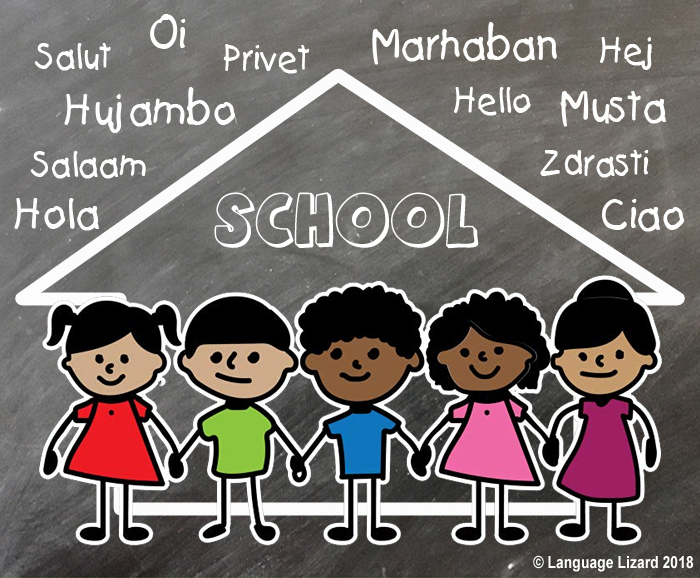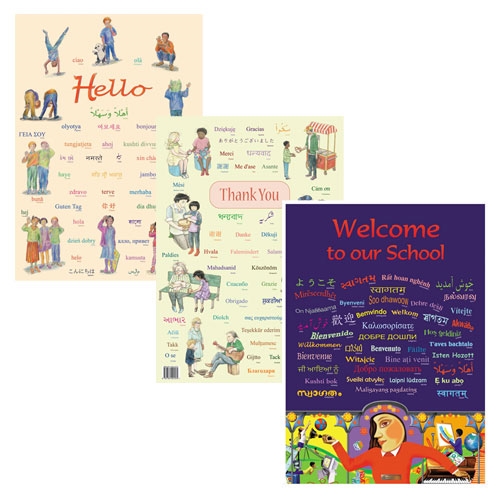 It may be hard to believe, but summer is coming to an end. Beach days and family barbecues will soon be behind us. You find your mind is full of lesson plans and an incoming class of new faces. As you’re organizing shelves and deciding on the optimal classroom layout, remember to consider the needs of your bilingual students. Now is the perfect time to create a welcoming classroom that reflects acceptance and diversity right from the start.
It may be hard to believe, but summer is coming to an end. Beach days and family barbecues will soon be behind us. You find your mind is full of lesson plans and an incoming class of new faces. As you’re organizing shelves and deciding on the optimal classroom layout, remember to consider the needs of your bilingual students. Now is the perfect time to create a welcoming classroom that reflects acceptance and diversity right from the start.
Create an Inclusive Classroom
You want all of your students to feel like the classroom is their own by decorating it with images that represent and support diversity. If possible, find out the cultures that will be represented in your class roster before school begins.
Bilingual students are proud to see their home languages reflected in dual language books and multicultural posters. Create a bilingual listening and reading center, where students can read in comfort. Introduce the class to interesting and exciting aspects of different languages, cultures and countries. Traditional foods, stories, holidays and history are just a few subjects that are sure to be a hit.
Be Supportive, Yet Sensitive
Teachers often walk a fine line between giving bilingual students extra care and attention, without making them feel singled out as being different. When you discuss other languages and cultures in your class, do so generically, so that any one student doesn’t feel singled out. Your sensitivity to their needs will ensure any class discussions increase your bilingual students’ confidence.
Some students like to talk about where they, or their parents, are from. They want to answer their classmates’ questions. However, not all bilingual children feel they are different from their peers. Let each student decide what makes him/her unique and special. For those who have negative feelings associated with having a different home language, try and determine what will help them feel more accepted and appreciated in the classroom.
Find Bilingual Resources
Gather bilingual books and other learning materials in your students’ home languages. Not only will it help students feel more welcome, it will also improve their literacy skills. Check out our post Bilingual Children: Benefits of Learning to Read in the Home Language for more information and tips.
You can also adapt your lesson plans to reflect the unique make-up of your students’ cultural backgrounds. Our free lesson plan “Understanding and Appreciating Cultural Differences” includes a fun “I am Unique” Scavenger Hunt.
Prepare Information for Bilingual Parents
It’s important to engage the parents of your bilingual students. Help them understand the vital role they play in developing the language and literacy skills of their children. Provide them with materials in their home language. Allow students to borrow bilingual books, and encourage parents to read them at home together.
Find Your Support Network
Where can you find support during the school year? Familiarize yourself with ways your school district can support you. Are there financial resources you can utilize, or administrators who can assist teachers of bilingual students? Look into joining the local chapter of your state’s bilingual educators association.
A supportive and understanding teacher can make all the difference in the life of a bilingual child. The entire class also benefits from learning about other cultures through the eyes of their fellow classmates. Helping bilingual children blossom and shine in the classroom is truly a rewarding endeavor.



HI Author,
Very well written.
Even I’m the one who faced the bilingual problem during my schooling time.
Making diverse bilingual awareness will help a lot in educational institutions, I hope so.